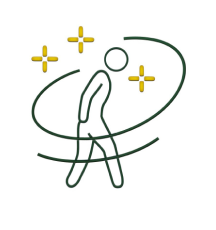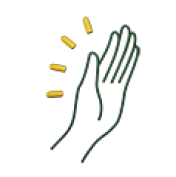Symptoms
Agitation associated with dementia due to Alzheimer’s disease is highly prevalent and identified by an array of symptoms1
Prevalence data
Agitated behaviors as defined by CMAI2
The Cohen-Mansfield Agitation Inventory (CMAI) is a clinically validated scale measuring the frequency of 29 agitated behaviors.
- Grouped into 3 subscales
- Scored by clinicians based on caregiver input
VERBALLY AGITATED
- Complaining
- Constant unwarranted request
for attention or help
- Repetitive sentences or questions
- Negativism

PHYSICALLY NON-AGGRESSIVE
- Pacing, aimless wandering
- General restlessness
- Inappropriate dress or disrobing
- Trying to get to a different place
- Handling things inappropriately
- Performing repetitive mannerisms

AGGRESSIVE
- Screaming
- Biting
- Hitting
- Kicking
- Hurting self or others
- Cursing or verbal aggression
- Pushing
- Scratching
- Throwing things
- Spitting
- Tearing things/destroying property
- Grabbing onto people

Additional behaviors assessed by CMAI total score that often have low rates of occurrence include making physical sexual advances, intentional falling, eating/drinking inappropriate substances, hiding things, hoarding things, making verbal sexual advances, and strange noises (weird laughter or crying).2,3
What is a CMAI total score?2
- Each of these 29 agitated behaviors is assigned a frequency score based on its frequency through the preceding 2 weeks
- The sum of each agitated behavior's frequency score creates a CMAI total score
- A negative change in total CMAI score indicates improvement
Swipe to see full chart
MMSE, Mini-Mental State Examination.
References: 1. Halpern R, Seare J, Tong J, et al. Using electronic health records to estimate the prevalence of agitation in Alzheimer disease/dementia. Int J Geriatr Psychiatry. 2019;34(3):420-431. 2. Cohen-Mansfield J. Agitated behavior in persons with dementia: the relationship between type of behavior, its frequency, and its disruptiveness. J Psychiatr Res. 2008;43(1):64-69. 3. Rabinowitz J, Davidson M, De Deyn PP, et al. Factor analysis of the Cohen-Mansfield Agitation Inventory in three large samples of nursing home patients with dementia and behavioral disturbance. Am J Geriatr Psychiatry. 2005;13(11):991-998.
